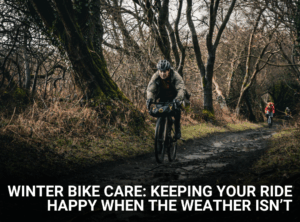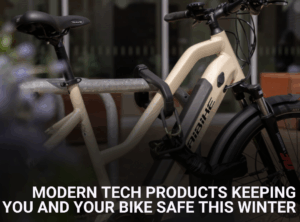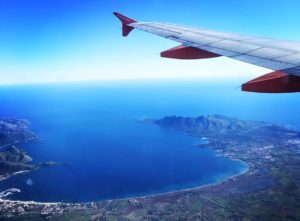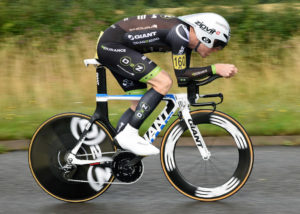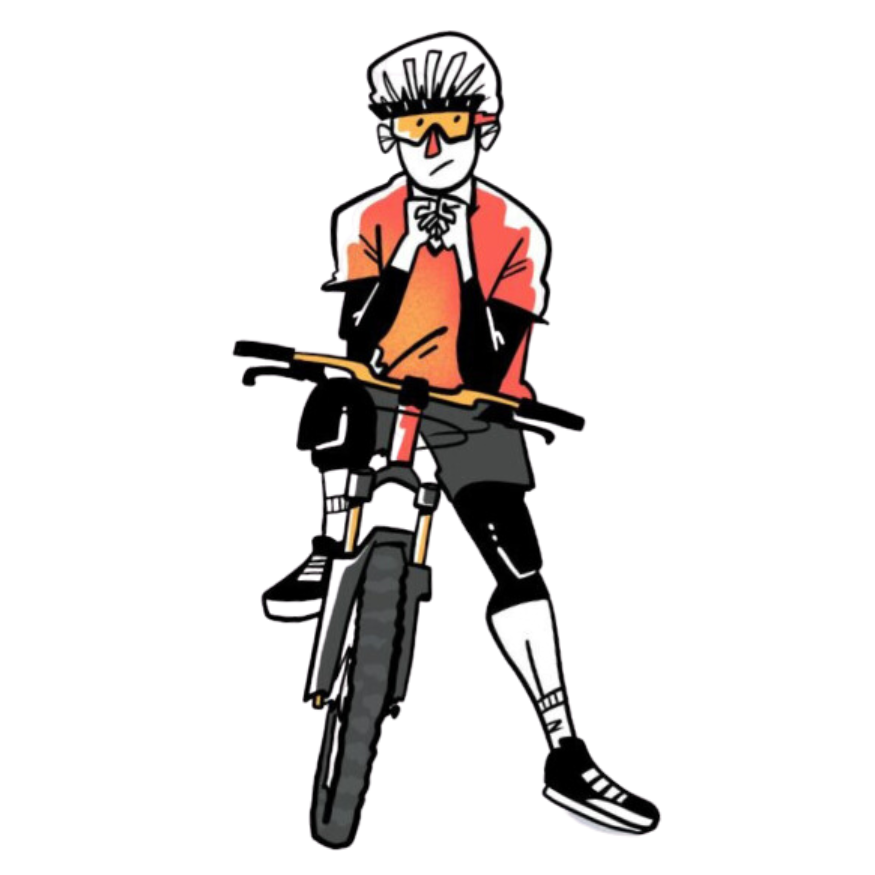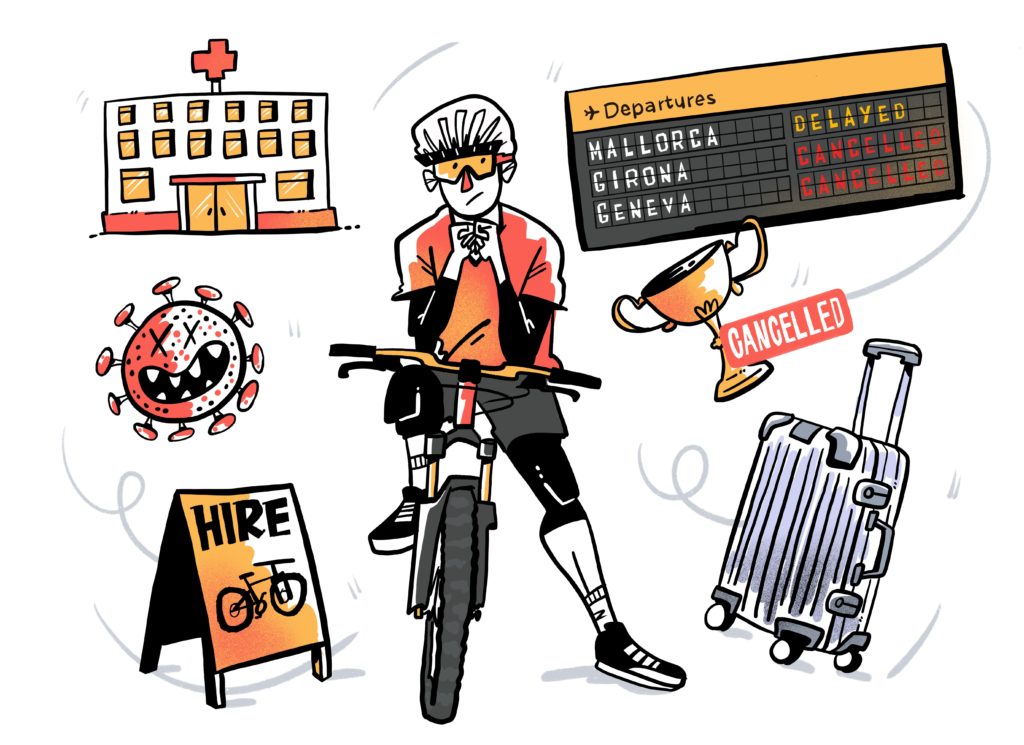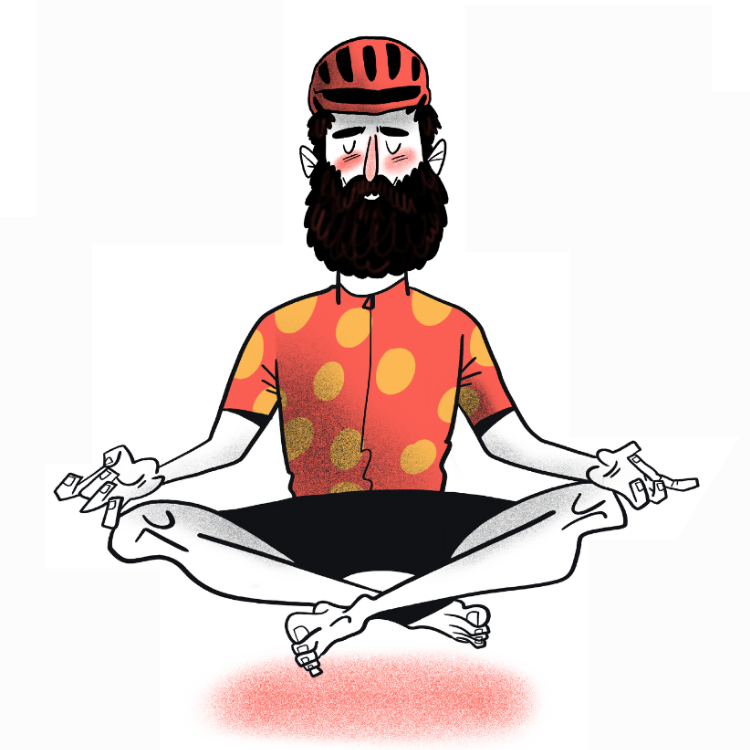Mark Beaumont is no stranger to riding his bike as fast as possible. Preparing for a speaking tour across the UK to share the highlights from his career so far, he is best known for this record double: In 2008 he set the fastest time for circumnavigating the world by bicycle in 194 days, and bettered the world record in 2017 again in an astonishing 78 days, 14 hours and 40 minutes. This record, Around the World in 80 Days, has stood for more than five years now.
Over the years Mark has become a well-respected ultra-endurance athlete, but always with a sense of wanderlust to find new disciplines of cycling and new wild places, including those closer to home. He has evolved from footloose epics of his 20s, to building towards a level of performance and precision that allows him to continue to push boundaries.
‘It’s actually really only since Around the World in 80 Days that I’ve really focused first and foremost on performance. My training has changed beyond recognition, as well as my nutrition and recovery. I’ve evolved from being an adventure athlete to being a racer. I am really focused on how you can take these records to another level.’
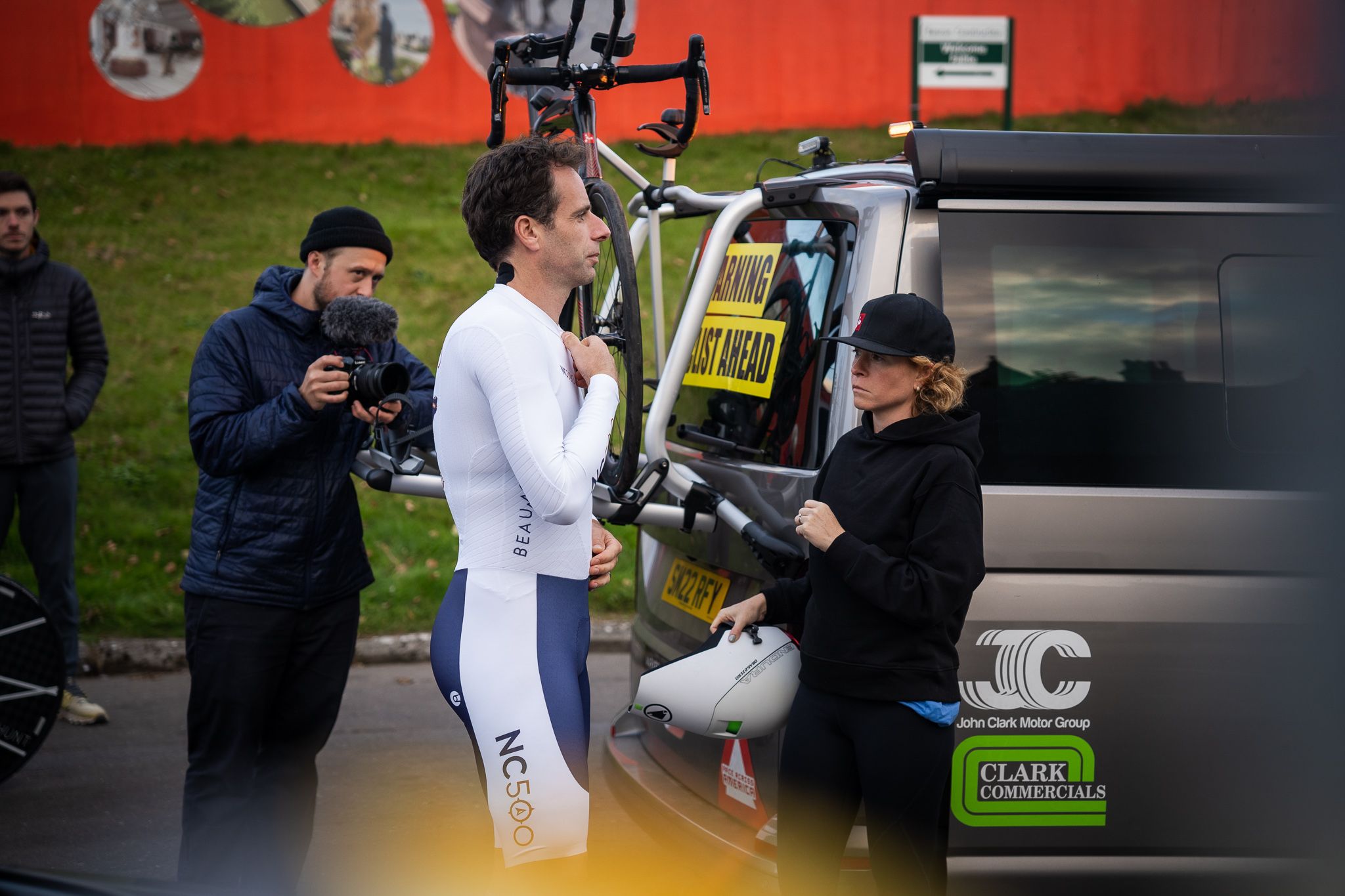
But setting and beating the world record isn’t the only double Beaumont has achieved on the bike. Seven years after setting the inaugural record of 37 hours and 58 minutes on the North Coast 500 in 2015, when the route was launched, he took the record again on 25 September 2022 in a time of 28 hours 35 minutes, beating Robbie Mitchell’s previous record time of 29 hours and 6 minutes by half an hour.
For such an ultra-fast time trial the North Coast 500 undoubtedly provides one of the most beautiful settings in the world. At 516 miles (830 km) the route combines stunning coastal scenery with rugged mountains, embedded in a rich cultural heritage. With more than 32,000 feet of elevation, including passes like the Bealach na Bà, the route is extreme, and a dream many road cyclists aspire to. As with any circular route, the wind will eventually turn into a headwind, so Beaumont’s preparation was focussed on riding consistently and staying as aerodynamic as possible.
‘I would reflect that the North Coast 500 this year was incredibly rewarding, because I knew in theory that I could get around the course in about 28.5 hours. I knew what I would need to do to be able to do that, and I knew in theory I had the training. But I’ve never done it. I’ve never ridden at that power level for that long, and stayed in that aerodynamic position without getting up and relaxing.’
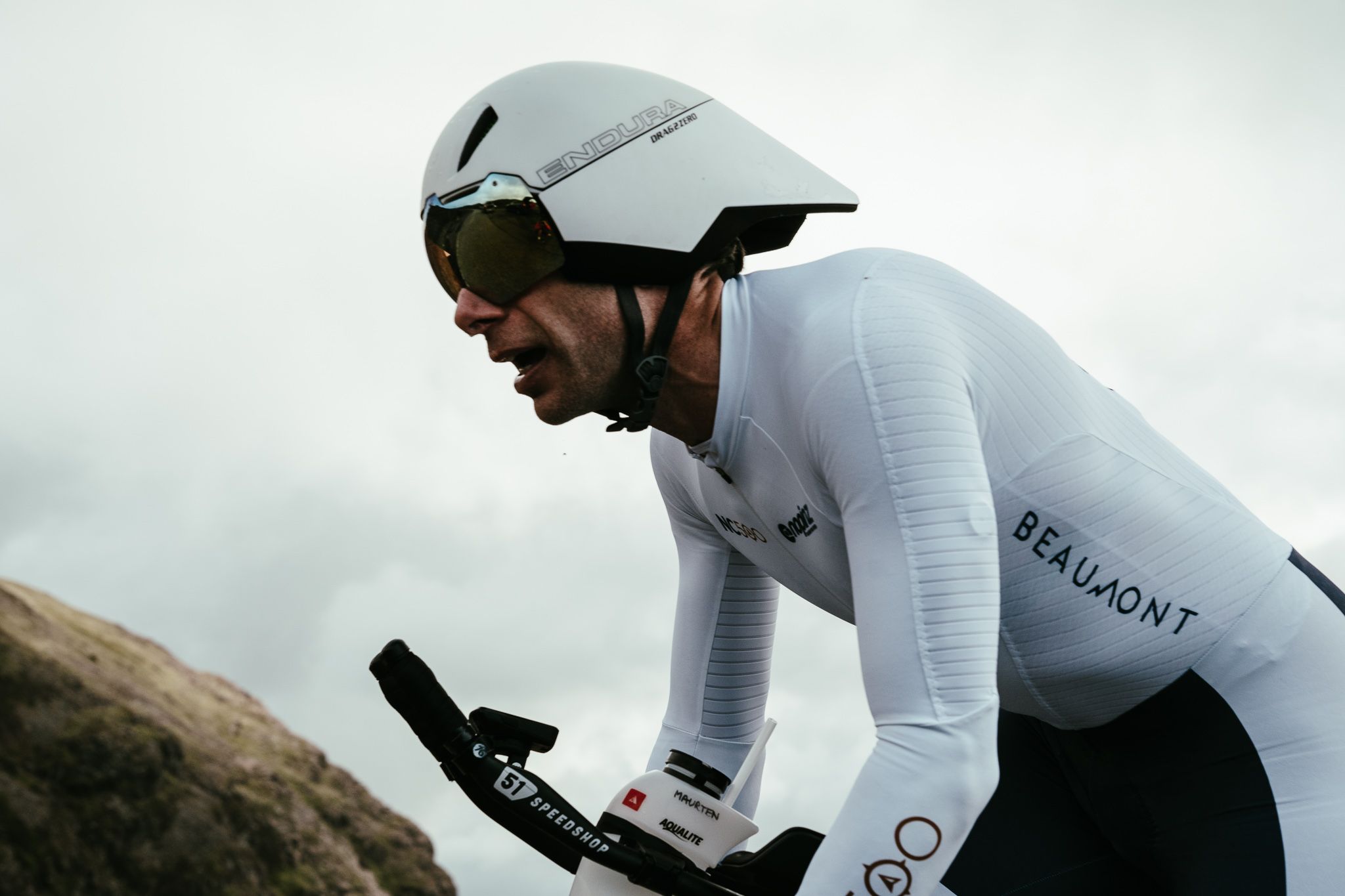
Living in Edinburgh I have known Mark for a number of years now, and was delighted when he called me a few days before his record attempt, kept secret until then, to ask if I could join the crew as an official photographer. Having worked with Mark on previous filming projects like Explore Your Boundaries and Maiden Race, we were a well-trained team. As a friend, I knew how much was at stake for Mark. After a Covid case in the team brought an end to his Race Across America, he wanted to finish the 2022 season with a bang. I was honoured to be asked to capture his rides in images, and working alongside the documentary film crew from GCN, who turned the ride into two films, the hour-long ‘North Coast 500’ on GCN+ and ‘Riding Scotland’s North Coast In 29 Hours’, available free to watch on YouTube.
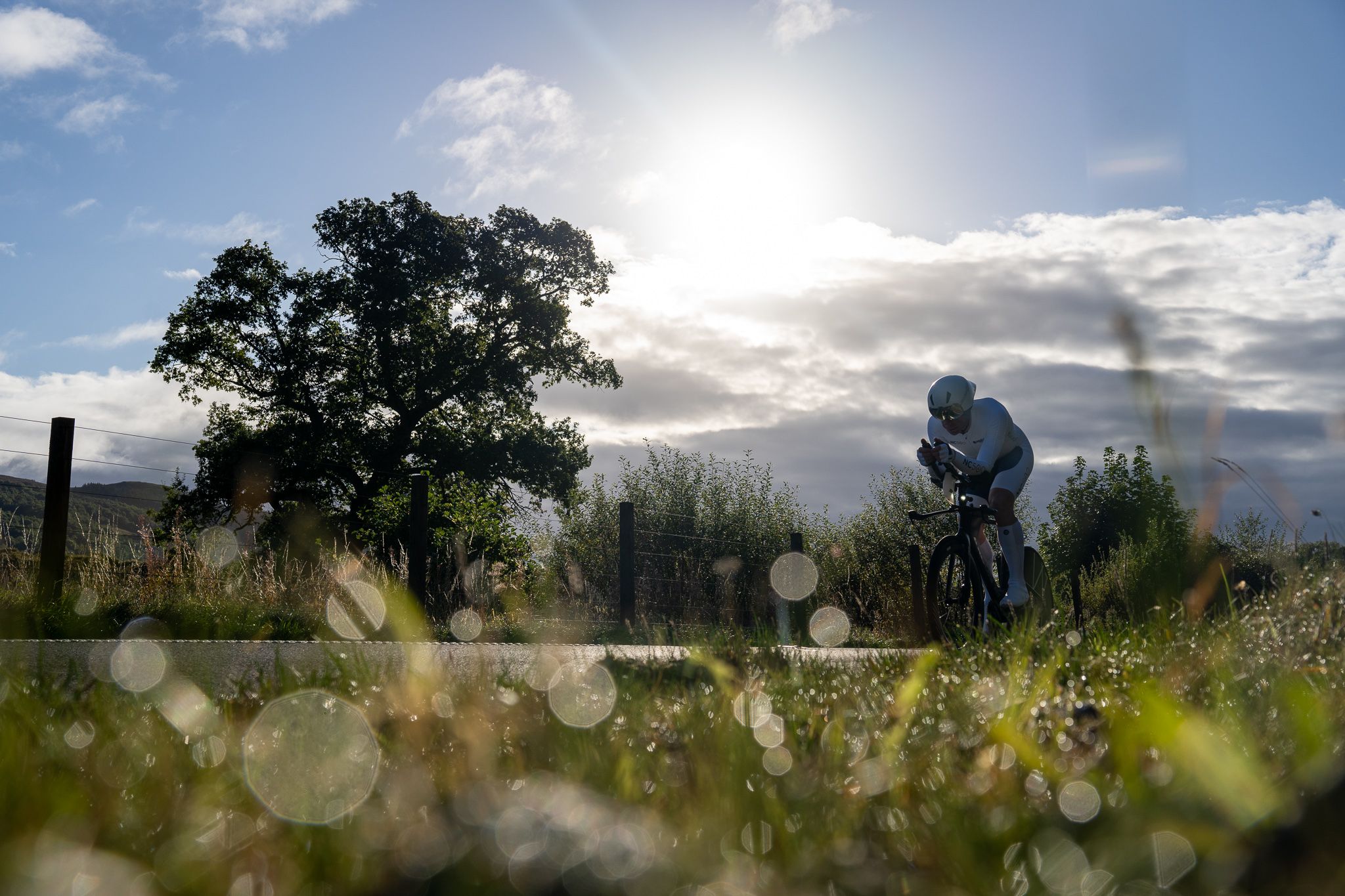
Leaving at 8am at Inverness Castle, the conditions at the start were ideal. A light breeze and cloudy skies, with the sun eventually coming out at the first brilliant location for images near Beauly. While I was finding a good compromise to capture Mark’s ride in all its facets without getting in his way or the team from GCN, Mark powered along the roads, quicker than expected. Later on I would become known as the person who seemed to appear from random bushes along the road, which worked perfect for hiding until Mark and the crew approached. There was a quick smile on his face when he appeared on the top of the Bealach na Bà, but he was gone as fast as he approached. All was going well.
‘As it turned out I probably did ride too fast for the first six hours over to the West Coast and over Applecross, but I was still very conscious to not push too hard and really play the long game. I had my first big psychological crash, the first time I really had a slump when I was coming around Torridon. So that was about seven hours. Then I’d gone over the big climb, I’d done the 2000 feet climb. It wasn’t that I was in a particularly bad place on the bike at that point. The sun was shining, it was beautiful. But I think it was the fact that by the time you’d be on the bike for seven hours, it already feels like you’ve been on a long bike ride. The legs are a little bit sore, the back is sore, you can feel your neck. It feels pretty aggressive on that bike, so seven hours in without really a break, you feel like you’ve been out there for a while. And it was that realisation that for at least the next 20/21 hours nothing is going to change.’
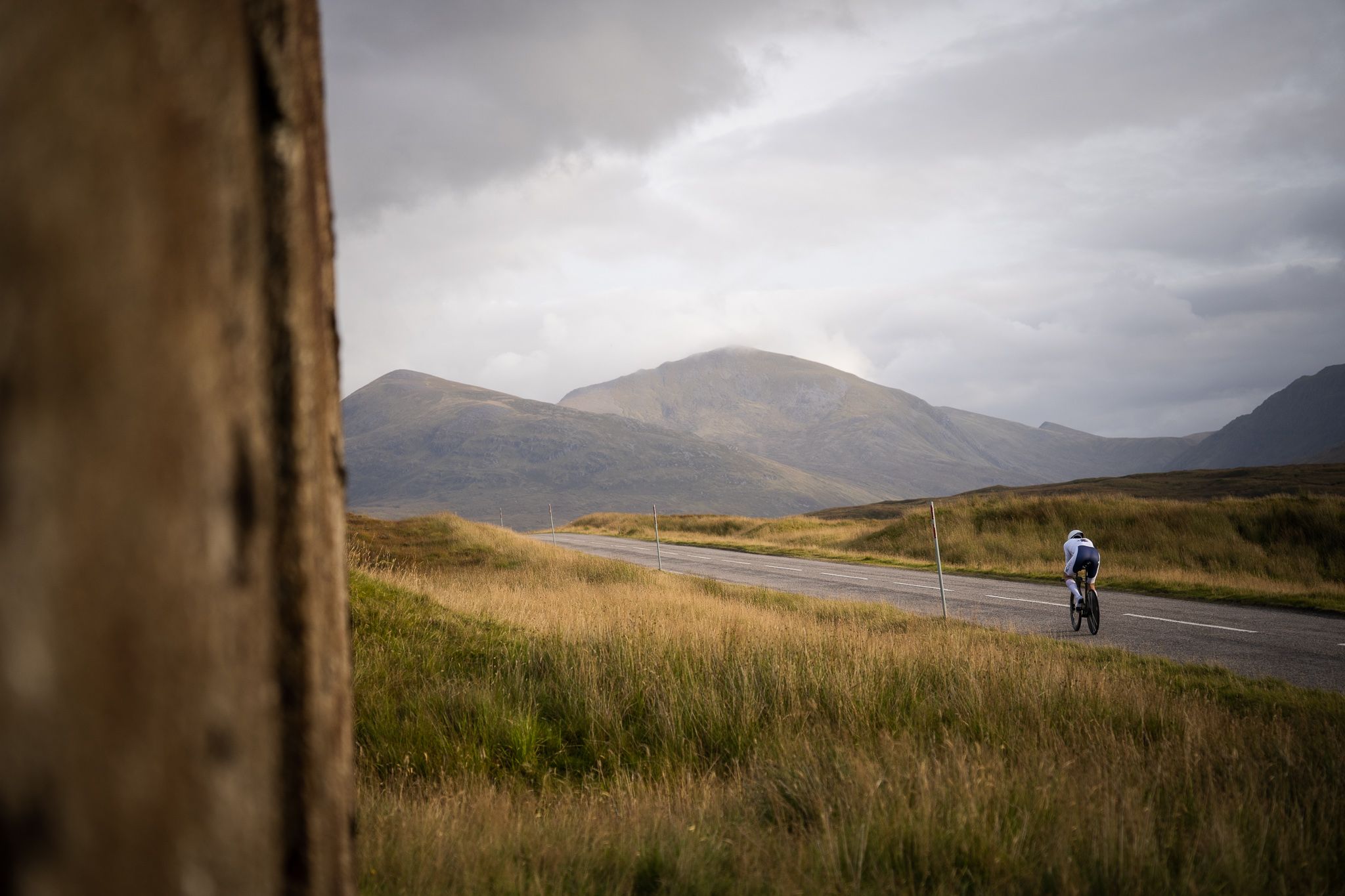
After a quick refuel stop at the service station in Kinlochewe we were back on the road. I had the luxury of having a driver, so I could fully focus on the camera work, and at times updating Mark’s social media channels. It was amusing to see that a very few people thought he’d have the time to post tweets and stories. He only paused for 16 minutes during the entire ride across three stops. I missed the first stop, but made sure Tom, my driver, and I were in the right spot when Mark paused briefly for a second time. It was at those stops where it was obvious that his support crew was working extremely well as a team, servicing the bike and swapping bottles and gear in less than five minutes at the second stop. Mark left them to it, had a quick pee and was back on the bike in no time.
‘I wasn’t massively interacting with my team around me. That takes unnecessary energy. It gave me a massive boost when Hank stood at the roadside shouting at me, cheering, supporting. I think that the moral support and the general goodwill and amazing team effort, I took a huge amount of strength from. I think the fact that it probably looked like I was just focused on riding the bike, but the truth of the matter is that I was absorbing every bit of camaraderie and support that I could get. I absolutely thrived off the goodwill and the support of everyone around me.’
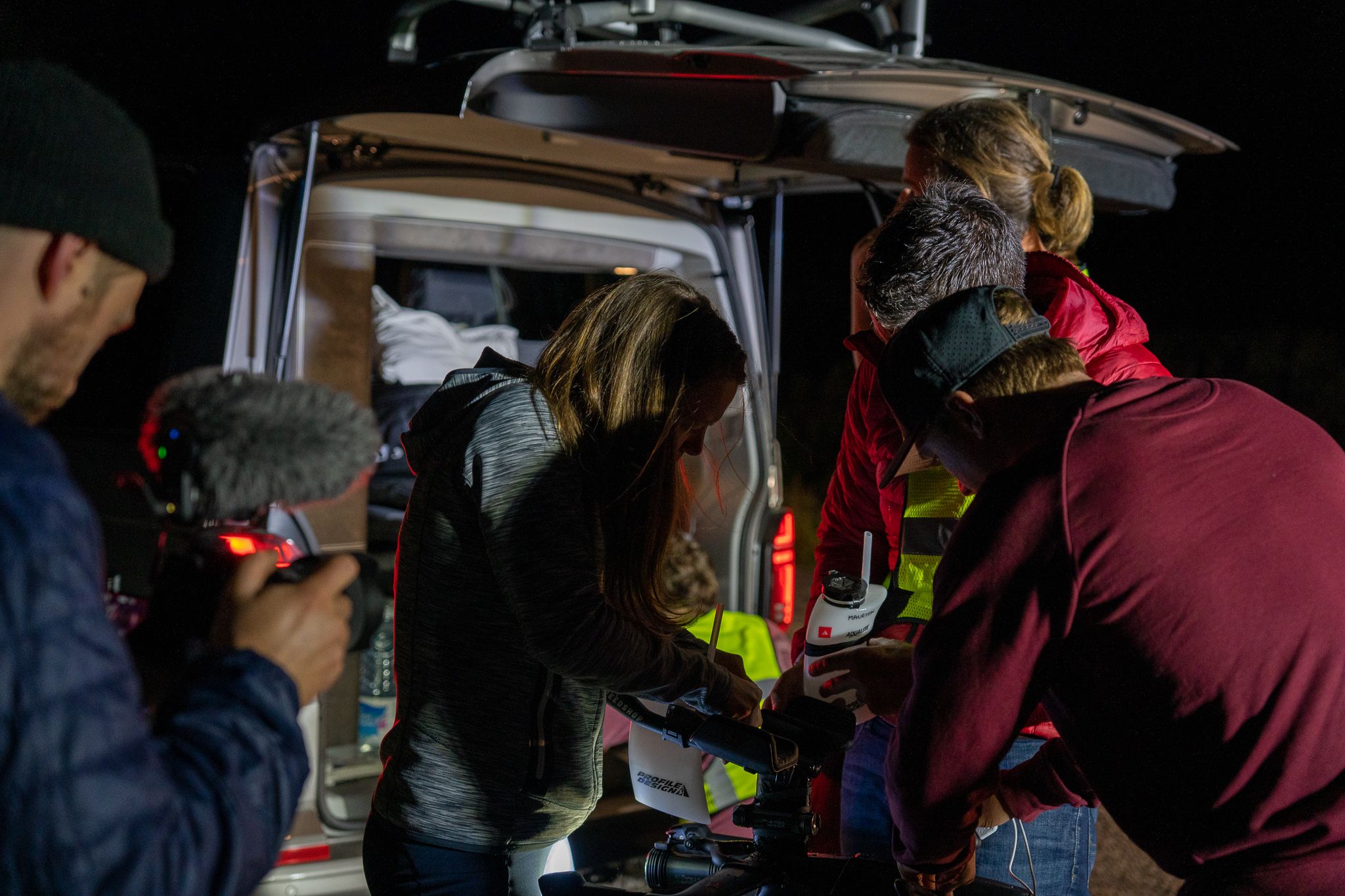
The roads along the North Coast are pretty narrow and twisty, which made it more difficult than usual to photograph the ride. We often found ourselves passing an amazing setting, only to realise that the next safe place to stop for a vehicle was a few miles further away. There were times that I wished to be on a bike myself, as it would have allowed for much more flexibility. But every time Mark passed I was gently reminded that his pace was far beyond my own abilities. At some locations the drone came in handy, as I could spot Mark from the air and be ready when he passed. There was as little room for error for me as a photographer as there was for the whole team. Everyone had to fully commit. Mark rewarded our efforts with a very consistent ride, ahead of his own schedule, but still behind the time set by Robbie Mitchell, which was his to beat. As we approached Ledmore Junction past Ullapool, night set in. Tom and I went off route for a dinner break, while Mark was attempting the most difficult section of the ride, the coastal road between Lochinver and Drumbeg.
‘The bit that really beat me up the first time around, and that I had trepidation about, was the road north of Lochinver. It’s 24/25 miles of just the most hellish short sharp climbs. I nicknamed it the shark’s teeth. It’s just a section of road where you can’t keep any rolling speed on it, it’s absolutely brutal. And I think that was playing on my mind. I was once again gonna get there in the middle of the night. And it was just as hard as I remembered: Getting to tackle a road like that on a time trial bike. I can’t tell you the relief when I finished it and got back onto the bigger A-road and turned north towards Durness.’
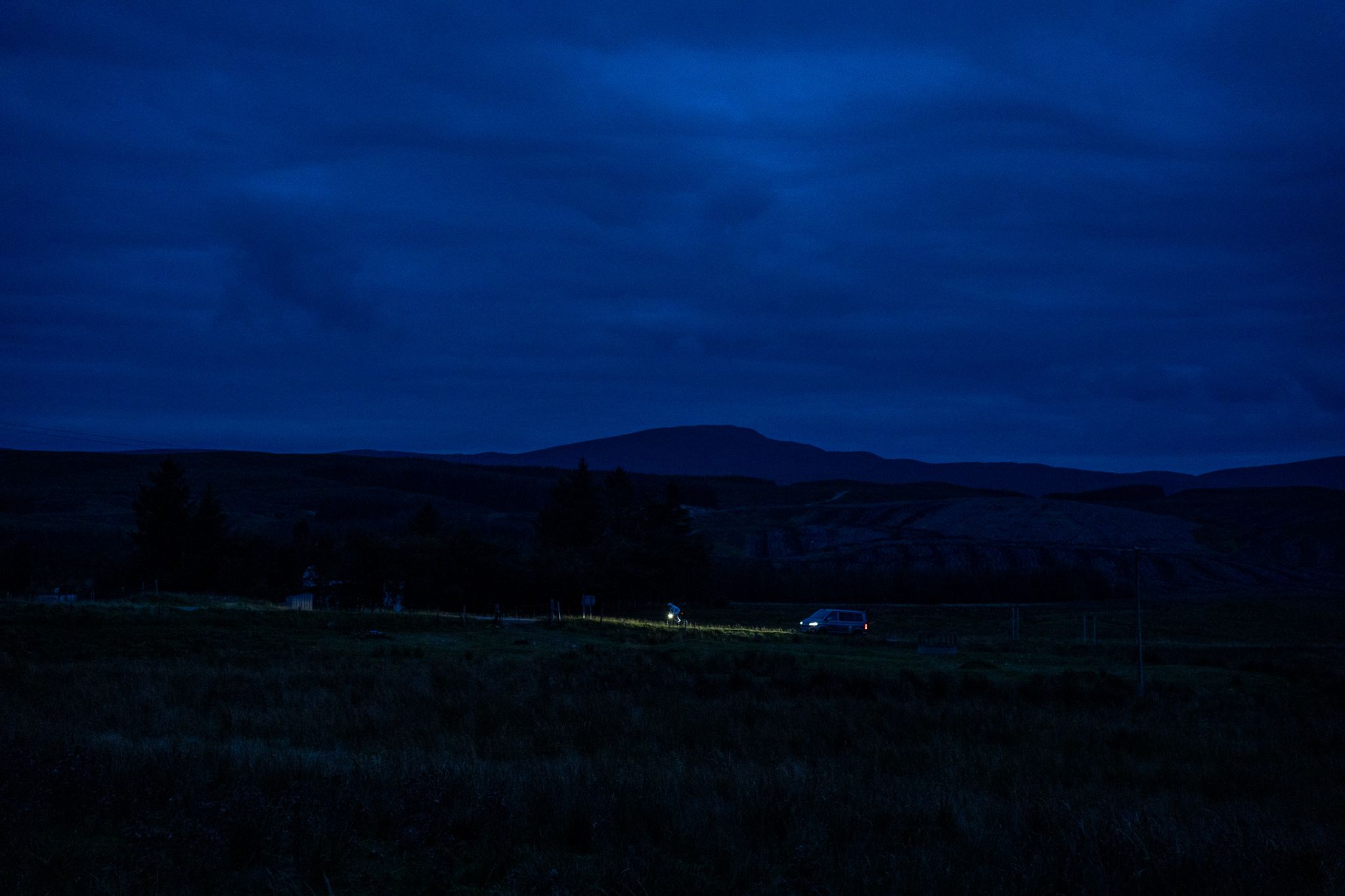
It was at Durness when Tom and I were ahead of Mark again, while he was powering relentlessly through the night. Between 350 and 400 miles he leaped past Robbie’s time, and would stay there until the finish line. In those 50 miles Mark gained a whopping 43 minutes, but the race wasn’t even remotely won at this stage. While I tried to stay awake most of the night, we had to pull aside for a short nap near John o’Groats, while Mark was silently passing.
‘I had a big worry when I turned the corner at John o’Groats that the headwind would mean that I would lose any advantage that I had. I knew the best case scenario would be 30/35 minutes up based on my average speed, but I thought with a cracking headwind for the last 130/140 miles I could lose all that. So when I turned the corner, I faced some really bad windy sections coming down the Berrydale Braes, and some of the more exposed sections up by Brora. But even though they were bad and I was having to dig really deep and ride pretty strong, I wasn’t slowing down that much. So once I got south of Brora and I was within 100 miles to go, I realised that unless I had a catastrophic failure at that point, I wasn’t going to lose half an hour.’
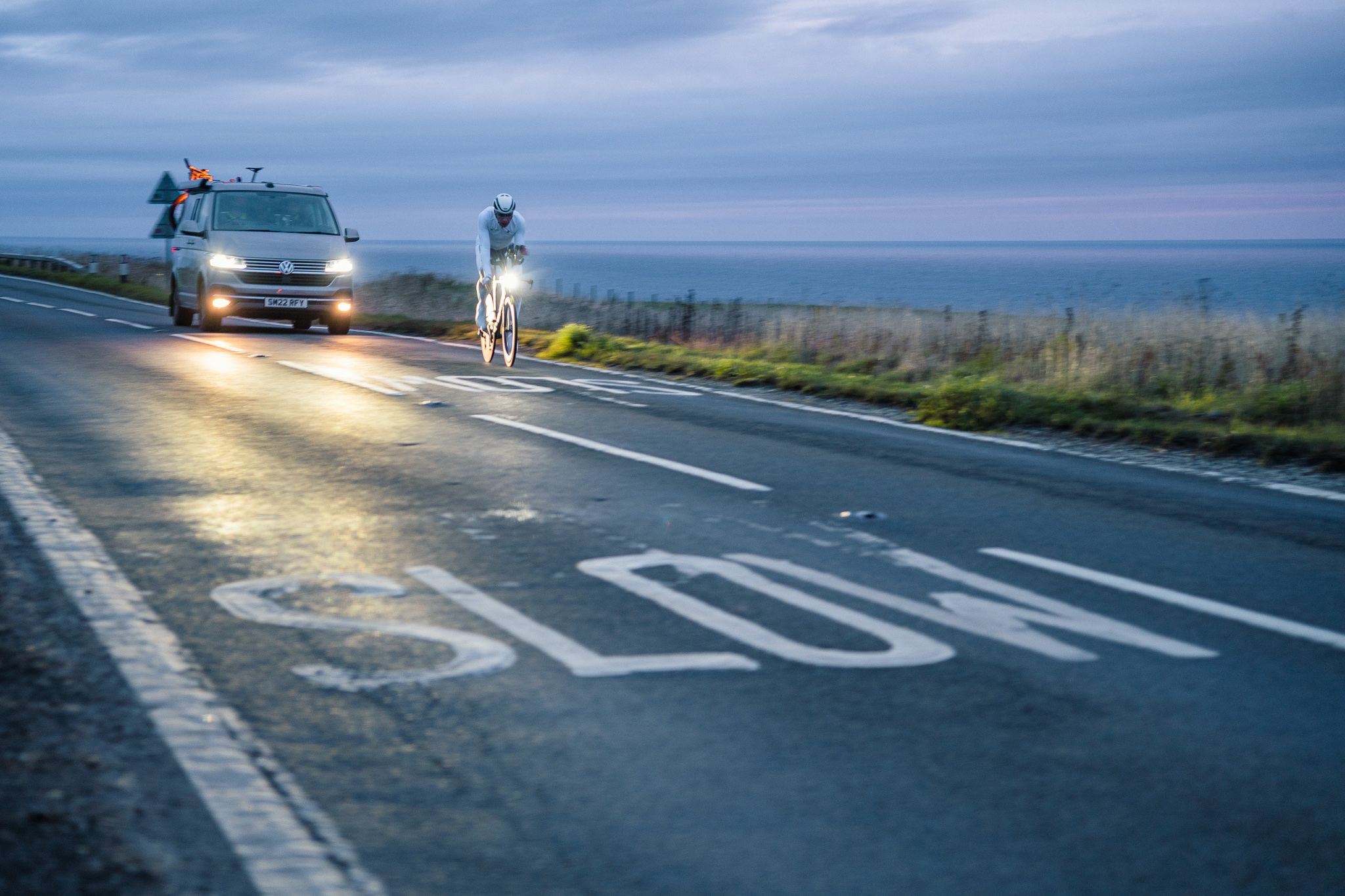
While both Tom and I had no real idea how his time would compare to Robbie’s, it was at the last stop that I knew that he was well on course to take the record. I took more time to focus on everything that was happening alongside – the film crew stopping for a coffee, supporters that had come out on the road to cheer Mark on, and finally the people that had gathered at Inverness Castle to welcome him back. All of us were rather amused when the last set of traffic lights he had to cross before the castle turned red just as he approached. In the same professional manner as he and everyone else had worked over the last 28 hours and 34 minutes he stopped at the lights, and gave us enough time to make it to our final place to welcome him back.
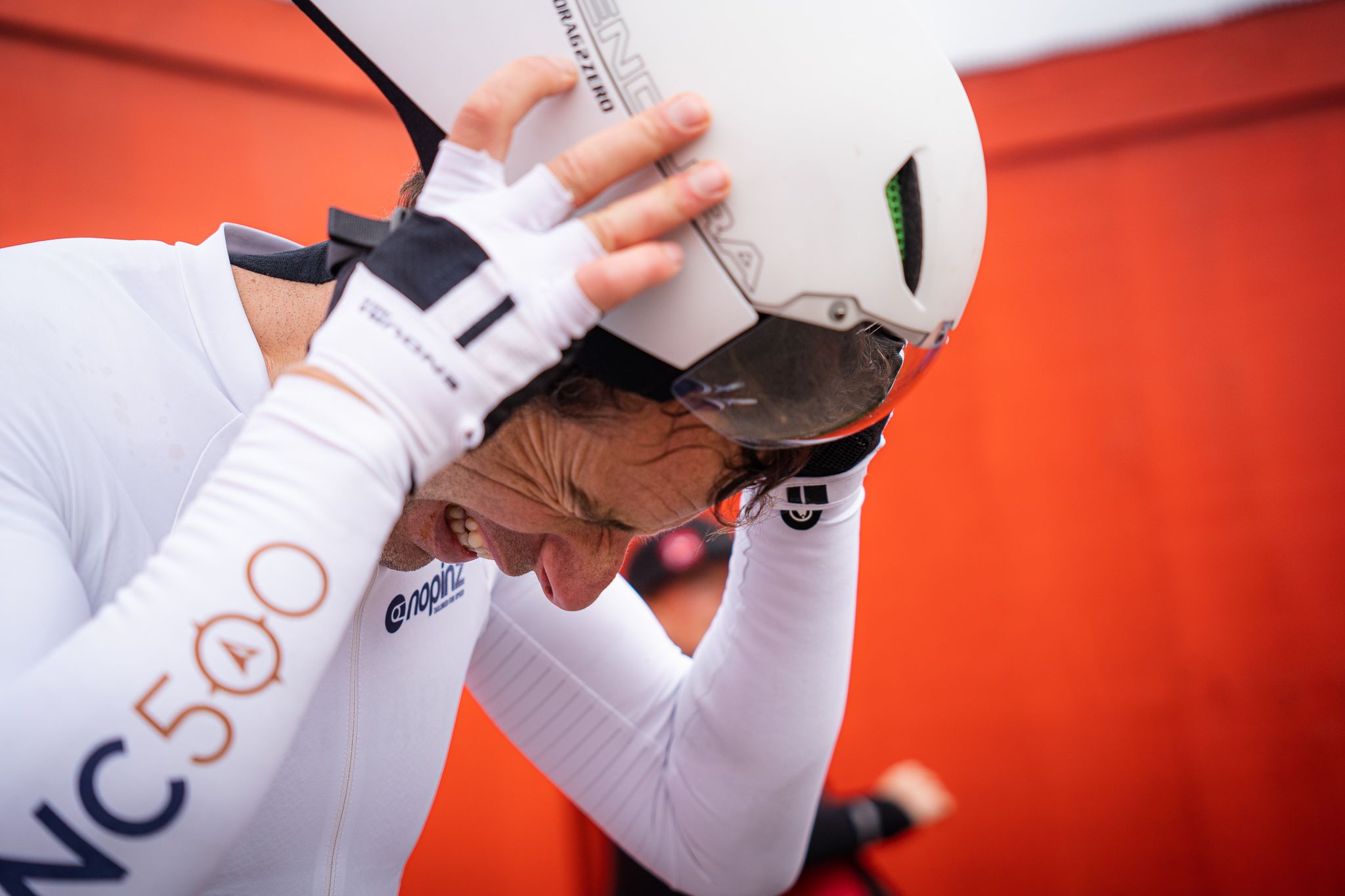
‘I think it’s like anything in endurance – the success and the enjoyment comes through appreciating what it takes to do it as opposed to that reflective glory of having the accolade. I think very few people will want to ride it non-stop, but if they take anything from the way I talk about the story, it’s understanding the why. Why do you want to do this? Why do you want to go and explore a beautiful route like the North Coast 500? Yes, you can tell your pals about it afterwards and bask in the glory of that, but ultimately there’s so much within that journey for very personal reasons that you should absolutely relish, enjoy and cherish. And I think that’s often missed when people are just out there trying to take on what are now these quite acclaimed routes, with kudos around them. You’ve got to remember why you’re doing it, why are you riding a bike, why are you pushing yourself. And you don’t need to be breaking records to understand that.’
Mark Beaumont’s ride on the NC500 can be found on komoot here. Mark shares more insight on his approach to ultra-endurance rides in his new book ‘The Complete Guide To Cycling Psychology’, available here.

